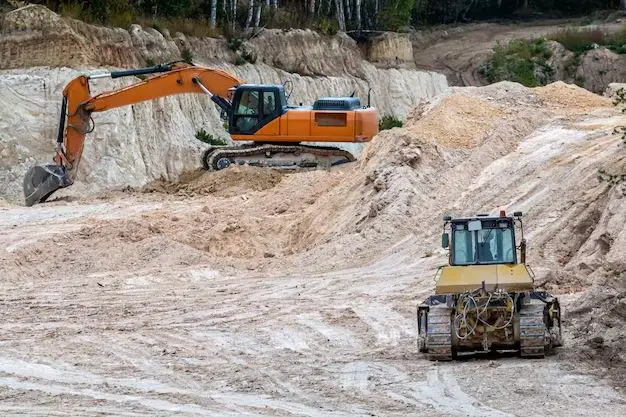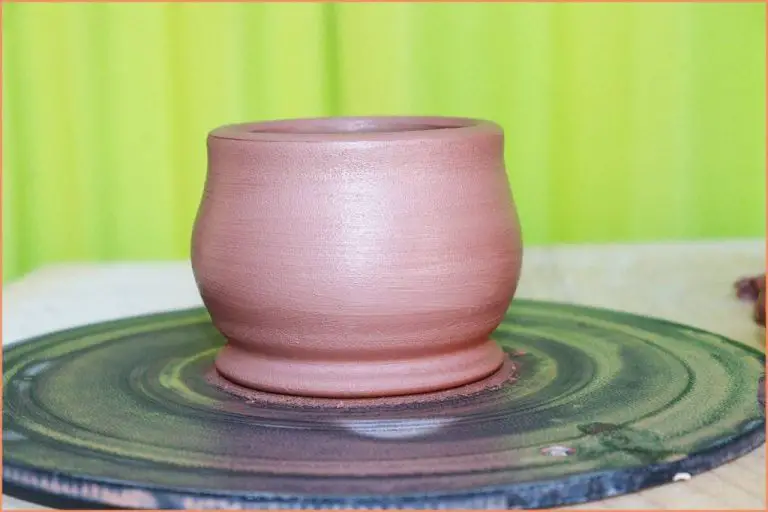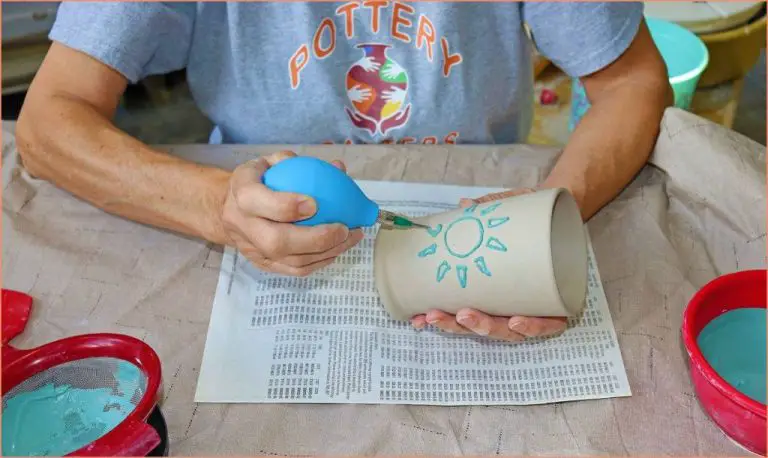Where Do They Get Clay For Pottery?
Clay has been an important material for making pottery and ceramic objects for thousands of years. Evidence of clay pottery has been found dating back over 20,000 years. Clay’s plasticity, ability to hold shape, and fire resistance make it an ideal material to shape into vessels, bowls, plates, and artwork. When fired at high temperatures, clay undergoes permanent physical and chemical changes that make the finished product durable and water resistant. The value and usefulness of pottery led to its quick spread and development in early human cultures.
Today, a wide variety of clay types are used by potters, each with their own characteristics and best uses. To obtain clay for pottery, deposits are located and the clay is dug up, harvested, and processed. Alternatively, processed clays can be purchased from ceramics suppliers. Understanding where pottery clay comes from provides insight into this fundamental material that has been indispensable to human civilization.
Types of Clay
There are three primary types of clay used in pottery: earthenware, stoneware, and porcelain. Each type has distinct characteristics and is fired at different temperatures (Types of Clay for Pottery – The 5 Main Types of Ceramic Clay).
Earthenware is fired at lower temperatures, between 1700°F-2100°F. It is porous and less durable than stoneware or porcelain. Earthenware can be used to create pottery with a terra-cotta look. It fires to a reddish-orange color if no glazes or stains are used (Types of Clay for Pottery – The Main Clay Types).
Stoneware is fired at higher temperatures, between 2200°F-2400°F. It is less porous than earthenware, making it more durable. Stoneware has excellent thermal properties and resists thermal shock. It fires to a gray or brown color. When a clear glaze is applied, the stoneware takes on a glossy appearance.
Porcelain is fired at the highest temperatures, between 2250°F-2350°F. It is fired hot enough to become vitrified, meaning the clay particles fuse together to become non-porous. This makes porcelain strong and durable. Porcelain has a white color when fired, and it can be translucent if fired thin enough.
Clay Deposits
Clay deposits are formed naturally through the weathering and decomposition of rocks over long periods of time. According to the USGS, “Most clay minerals form where rocks are in contact with water, air, or steam.”
The primary ways that clay deposits are formed include:
- Chemical weathering and decomposition of feldspar-rich rocks like granite. As the feldspar minerals break down, they produce clay particles.
- Hydrothermal alteration of rocks by hot, chemically-charged water. This often occurs near volcanoes and forms deposits of kaolinite clay.
- Transportation and deposition of weathered rock particles into lakes, oceans, and lowlands. Over time, these clay sediments accumulate to form shale and mudstone.
- Conversion of volcanic ash and tuff into clay minerals through chemical weathering.
- Precipitation of clay particles from river water as it encounters saline or alkaline conditions.
Some of the most significant clay deposits come from the weathering of granite rock and decomposition of feldspars (see USGS). Other deposits have formed from volcanic ash and hydrothermal alteration. Over geologic timescales, these processes produce abundant clay resources.
Locating Clay
Before clay can be harvested, potters must locate quality clay deposits. While clay can be found in many locations, high-quality pottery clay is rarer. According to https://ancientpottery.how/how-to-find-clay/, there are a few key methods for locating clay:
Surveying Land – Looking for areas with exposed soil near water sources can help identify potential clay deposits. Certain land formations like floodplains along river banks tend to accumulate clay over time. Visual surveys of the landscape can narrow down potential digging sites.
Testing Soil Samples – Taking small soil samples and testing them is key. Adding water to see if the soil becomes plastic and moldable is a simple field test. Firing test samples at pottery temperatures can verify if the clay is suitable quality.
Professional surveys – For commercial clay mining, professional geological surveys and core samples precisely map underground clay deposits. This helps determine the excavation location and depth.
Digging and Harvesting
Clay deposits are often found underground, which requires digging and excavating to extract the clay. According to How to Process Clay – 4 Steps to Turning Dirt Into Usable Clay, the most basic tools for digging clay include shovels, picks, and mattocks. Holes of up to 10 feet deep may need to be dug to reach quality clay deposits. Smaller hand tools like trowels, buckets, and wire screens can assist in scooping and sifting excavated clay.
For commercial clay quarries, heavy machinery like backhoes, excavators, and bulldozers are used to remove large quantities of topsoil to access clay deposits. Front-end loaders scoop up clay, which is then processed. Locating clay often involves prospecting, analyzing soil samples, and surveying land for optimal clay content and quality before larger scale digging occurs.

Processing Raw Clay
Once clay deposits have been found and harvested, a process known as beneficiation must occur to purify and prepare the clay. This involves removing any rocks, roots, debris, and other minerals that are mixed in with the clay. There are several main steps involved in processing raw clay:
First, the clay is soaked in water to create a slurry. This allows the clay to be suspended in the water, while heavier materials sink to the bottom. The slurry is continually stirred to fully integrate the clay into the water. Per the instructions on How to Process Clay, the clay should soak for several days to ensure it is fully saturated.
Next, the clay slurry is poured through a screen or sieve to filter out any large particles or debris. The Ancient Pottery site recommends using a pillowcase or similar porous fabric over a bucket for an easy DIY filtering system. The filtered clay and water pass through cleanly, while rocks and roots are caught in the screen.
After screening, the clay mixture is left to settle for several hours. The clay particles will settle to the bottom, while undesirable minerals remain suspended. The clear water can then be gently poured off the top, leaving thick clay behind. This separation process may need to be repeated several times to fully purify the clay.
Finally, the clean clay is spread out to dry. Once dried, it is then crushed into a workable consistency using a mortar and pestle or similar grinding tool according to the instructions on Instructables. The clay is now ready for pottery and ceramic work.
Buying Processed Clay
Potters have several options for purchasing processed clay ready for throwing and handbuilding. Many art supply stores sell processed clay in smaller quantities for hobbyists. Larger bags of clay are available from online retailers specializing in pottery and ceramic supplies, such as Sheffield Pottery and Amazon.
The cost of processed clay varies widely depending on factors like quantity, clay type, brand, and specialized properties. In general, buying clay by the bag (25 lbs or so) from a specialty supplier costs $15-30 for stoneware and earthenware. More specialized porcelain and casting clays run $30-60 per bag. Buying clay in bulk directly from manufacturers reduces costs but requires large minimum orders, extensive storage space, and delays in shipping and drying the clay before use.
Recycling Clay
Rehydrating and reusing clay scraps is a great way to reduce waste and save money as a potter. There are several methods for recycling clay:
Collect clay scraps as you work and allow them to fully dry. Make sure not to mix different types of clay. Once dry, the scraps can be broken down and rehydrated in water. Let the scraps soak for several hours or overnight until they are soft again. Knead the rehydrated clay well to work it into a smooth, uniform consistency. The recycled clay is now ready to reuse (A Low Tech System for Recycling Clay Scraps).
For large amounts of scrap clay, a plaster slab can be used to draw moisture out of the clay and make it easily reusable. Roll the clay scraps into balls and place on a plaster slab until semi-dry. Flip over periodically. Once pliable, wedge thoroughly and store airtight (Recycling Clay: Tips for Collecting, Storing, Reclaiming).
Some potters use a three-bucket system to soak and breakdown clay scraps. Let the clay slurry settle before pouring off the water and reconstituting the thickened clay (Recycling Clay: Tips for Collecting, Storing, Reclaiming).
With a little effort, most clay can be recycled, saving money and reducing waste for pottery studios.
Storing Clay
Proper storage of clay is crucial for keeping it workable over time. Fresh clay straight from the bag contains moisture that allows it to be flexible and easy to shape. If exposed to air for too long, clay will dry out and become brittle. To prevent this, clay must be stored in airtight containers that lock in moisture.
The best storage method is to tightly seal clay in thick plastic bags, squeezing out any excess air, and then place the bags in plastic airtight tubs or buckets with lids. This creates two barriers against moisture loss (Freeman, 2015). The plastic bags prevent air exposure while the hard plastic tub provides an outer seal. For even better protection, some potters recommend doubling up on bags, using two layers per chunk of clay.
Clay storage containers should be kept in a cool, dark place like a closet or basement if possible. Heat and light can accelerate moisture evaporation. Only take out the clay needed for a project and promptly seal the rest. With proper storage techniques, clay can keep for many months or even years while maintaining its workability.
Source: https://www.baileypottery.com/blog/post/helpful-hints-on-clay-storage.html
Conclusion
In summary, the sourcing of high quality clay is an extremely important part of creating beautiful and functional pottery. As this article has shown, clay can be found in many locations across the globe, yet the best deposits yield clay with ideal levels of plasticity, strength, color, and purity. Master potters such as Jono Pandolfi source the finest clays to handcraft their sought-after ceramic pieces.
The care taken in digging, processing and preparing the clay creates the foundation for successful pottery. While pre-processed clay can be purchased, many potters prefer to start from raw clay to control quality. Proper recycling and storage of clay also maintains its properties over time.
From stoneware to porcelain, the downstream efforts of shaping, glazing and firing all rely on sourcing excellent clay. When experienced potters obsess over finding the perfect clay, it shows in the enduring beauty of their finished works.




